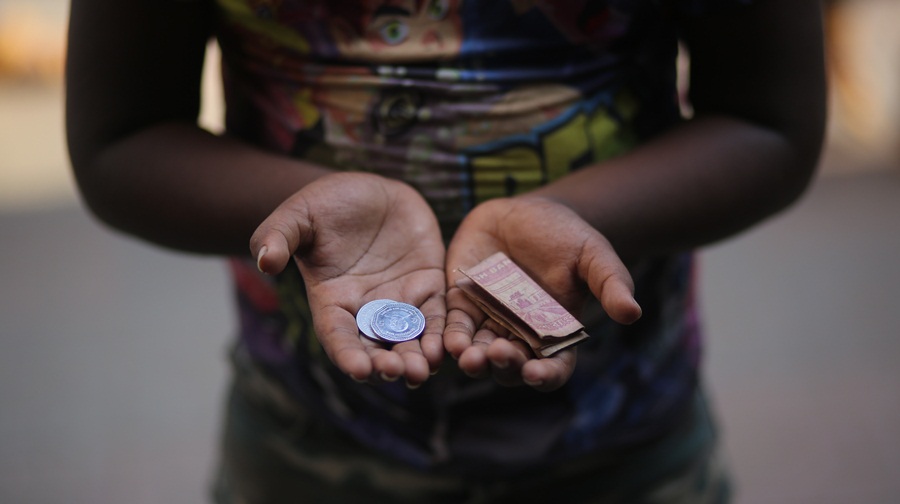A poor child growing up in a developing nation endures greater suffering than most poor children in a rich country.
Anna Rose
Child poverty affects children from low-income families as well as orphans who are raised with little or no assistance from the state. According to UNICEF, 356 million children are living in extreme poverty. One billion children are estimated to be without at least one basic need, such as housing, regular food, or clean water. Children are more than twice as likely as adults to live in poverty, and the poorest children are twice as likely as their wealthier peers to die before reaching the age of five. Children living in poverty are those who are deprived of the material, spiritual, and emotional resources needed to stay alive, develop, and thrive, leaving them unable to exercise their rights, reach their full potential, and participate as full and equal members of society.
Setting an absolute or relative monetary threshold is the simplest way to quantify child poverty. If a family’s income does not exceed that threshold, the children in that family are considered to be poor. Absolute poverty standards are set and only updated for price changes, but relative poverty thresholds are determined using the population's real income and consider changes in consumption. The absolute poverty threshold is the amount of money required to buy a specific amount of goods and services, and each threshold reflects the minimum income required to acquire basic necessities of life. However, a family earning more than a certain amount of money may still choose not to spend on a need for their children.
There are numerous theories as to why children are poor. The majority of children born into poverty have poor parents. The presence of child poverty is influenced by adult poverty; the causes could be government policies, lack of education, unemployment, social services, disabilities, and discrimination. Children’s opportunities are limited due to a lack of parental economic resources, such as disposable income. Deindustrialization, globalisation, residential segregation, labour market segmentation, and the migration of middle-class residents from inner cities limit economic opportunities and choices across generations, isolating inner city children. The breakdown of the nuclear family, illegitimacy, teen pregnancy, and the rise in single mothers are all cited as major contributors to poverty and welfare dependency among women and their children.
Children born of unintended pregnancies are more likely to be poor. Raising a child necessitates a significant investment of time and money, so each additional child places a greater strain on parental resources. Families with a single parent are generally poorer than families with two parents.
The impact of child poverty varies depending on social, economic, and geographic factors. Poor physical condition, mental development, and mental health (such as low self-esteem), a chance to work in skilled labour is extremely unlikely and at a young age, living in a deprived and isolated environment. Many studies have found strong links between childhood poverty and adult outcomes in education, health and socialisation, fertility, labour market participation, and income. Strong evidence suggests that children of low-income parents are more likely to have problems with their intellectual and behavioural development. Many studies have consistently found large negative associations between early childhood poverty and academic outcomes. Furthermore, children from low-income families are more likely to demonstrate behavioural and emotional difficulties such as impulsivity and trouble getting along with classmates. Family poverty is also associated with an increased risk of teen pregnancy, bad peer connections, and low self-esteem. Children who grew up in poverty are more likely to stay in poverty. A poor child growing up in a developing nation endures greater suffering than most poor children in a rich country, according to a relative measure of poverty. In these countries, poverty is usually defined as a severe deprivation of basic human needs. One-third of all children in developing countries live in poverty. Many of these countries are plagued by war, disease, corruption, lack of resources, and harsh environmental conditions, all of which contribute to their poverty. These factors are a leading cause of death, resulting in an increase in single parents and orphaned children.
UNICEF advocates for increased national social protection investments; and supports government efforts to track and monitor poverty reduction progress. The problem stems from a combination of factors, including failure to prioritise social protection programmes that benefit children the most; limited budgets and human resources; bureaucratic processes and a lack of information about entitlements and programmes; and discrimination against the most vulnerable, including those who receive social protection. As a result, the region’s most vulnerable children are not receiving the benefits to which they are entitled.
In order to achieve Sustainable Development Goal 1 of halving child poverty by 2030 and strengthening social protection systems to reduce the impact of poverty on children’s lives, UNICEF is collaborating with governments and other partners across the world.
∎